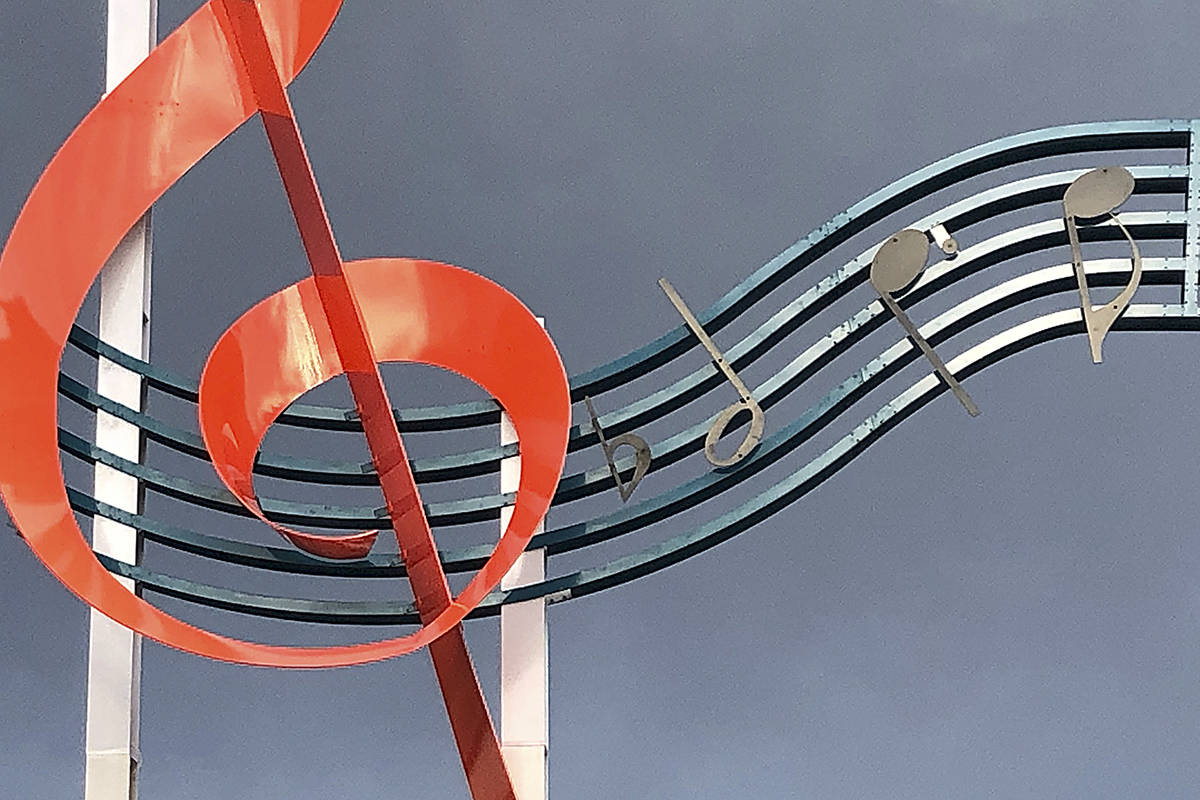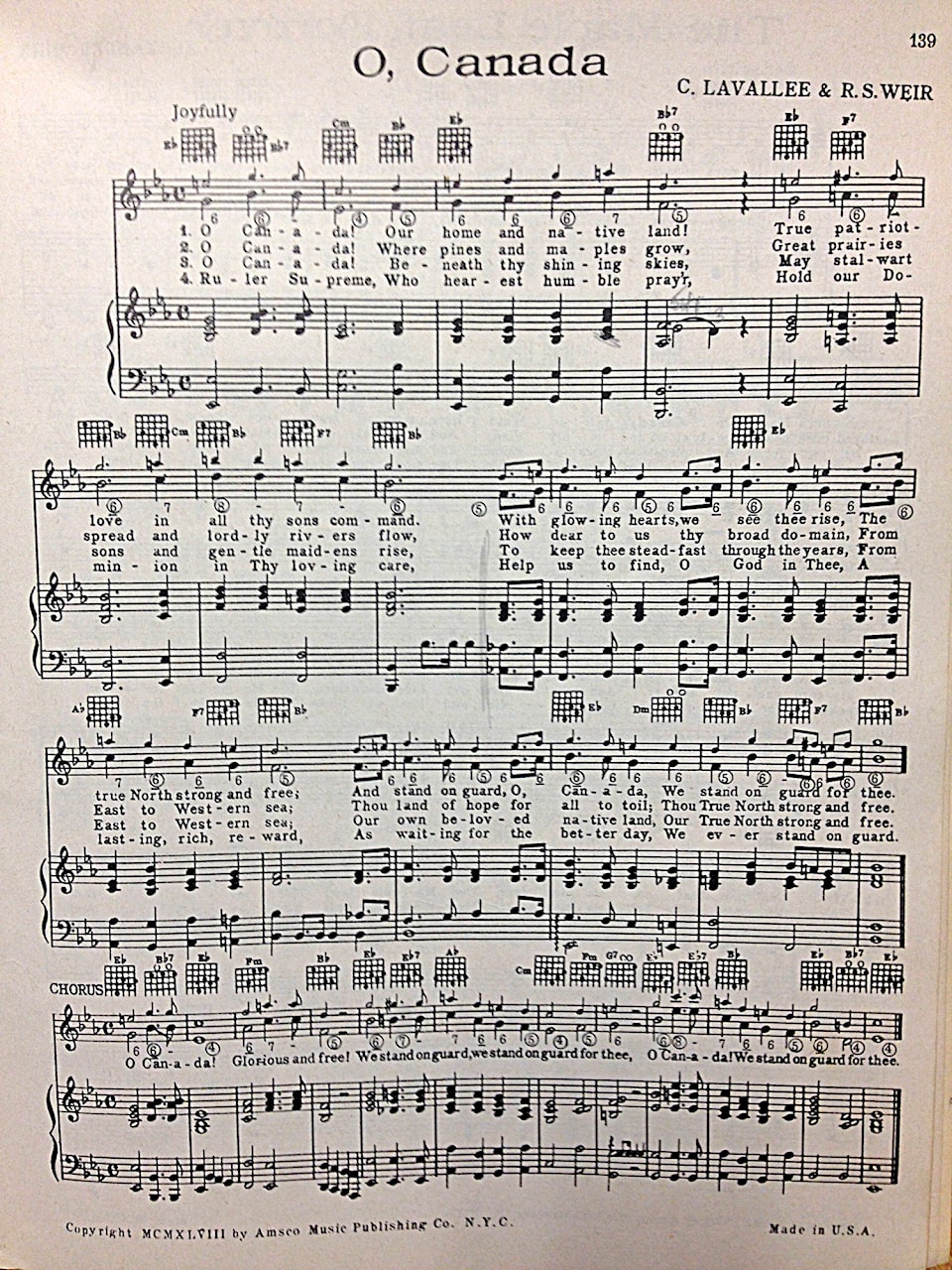The Salmon Arm Treble Clef’s rendition of O Canada is a little off-key for one musician.
A Nov. 3 email from Andy Gough to city staff refers to the new sculpture.
“Far be it for me to complain about your public art, but Calixa Lavallee wrote 0 Canada in the key of Eb, not F,” he wrote.
Reached by phone, Gough emphasized that he really likes the art piece – “it’s nice, it’s pretty, it’s happy” – but he said he noticed that the national anthem is in the wrong key.
Despite his complaint, he complimented the artists on using the correct font for the actual treble clef, which he said is rare.
Gough, who lives in Vancouver but has spent time in the Shuswap, described himself as a highly trained musician and a music theory nut.
He said almost every national anthem is written in E flat. However, he conceded it’s of no consequence for the sculpture.
“Whatever key, it’s fine,” he said, surmising that the anthem in Salmon Arm was done in F because it fits nicely in the grid.
It seems he’s right.
Read more: Senate votes to approve gender neutral wording for Canada’s national anthem
Read more: Sarah McLachlan set to perform Canadian anthem as Raptors aim for title
Read more: O No, Canada: Singer flubs anthem at Raptors game in NYC
Bill Laird, owner of Shuswap Park Mall and the person who contracted the public art piece, stated the original composer wrote O Canada in the key of G as a national song for French Canada during the Saint-Jean-Baptiste festivities in June 1880.
“Musicians typically choose the key in which they will perform based on personal preference or the pitch of their voice,” he wrote in an email. “The music for Salmon Arm’s Treble Clef is in the key of F, chosen by the designers for the balanced appearance of the stems of the notes; an arbitrary but accurate representation of our anthem.”
The Canadian Encyclopedia seems to agree with the “arbitrary but accurate” description: “The original key of G is particularly suitable for instrumental performances. A lower key — F, E or E flat — is preferable when it is sung. The original version, in G, is for four voices and piano.”
Gough dug out a 1948 version of O Canada which is written in the key of G.
He writes: “Wikipedia does say the key of G. It also says the original is missing. I still believe the original key is Eb since most National Anthems are written in Eb. G is a great key for campfire guitar but lacks the patriotic timbre of Eb. Nobody writes in more than three sharps or flats when writing for general consumption, especially anthems. The composer wants people to be able to play it without too much difficulty. A is too high and bright. D is way too bright and happy. G is somewhat boring for an anthem. C is bland and the vocal range can get hairy. F is good but a little blah. Bb is too jazzy and can be a tough vocal range. Eb is deep and patriotic and fits into most people’s vocal range.”
Meanwhile, Gough said he’s looking forward to coming through Salmon Arm again where he can admire the Treble Clef in person, not just on television.
@SalmonArm
marthawickett@saobserver.net
Like us on Facebook and follow us on Twitter

